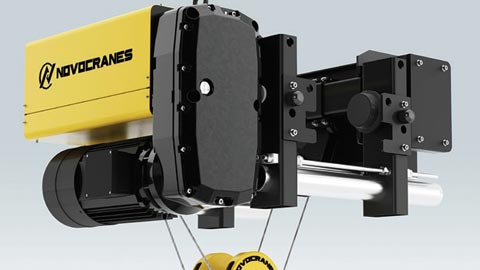Integrated 3D CAD to streamline management of 3D Design
Integrated 3D CAD to streamline management of 3D Design

Case Study
Integrated 3D CAD and design management help Eurocrane design better
Eurocrane
Leading Chinese crane manufacturer relies on Solid Edge and Solid Edge SP technology
Modularization and “lightweighting” have become important trends in crane design. Large manufacturers focus on assuring the safety and reliability of the entire crane through an optimized design structure and reduced materials cost. The top-down 2D design approach adopted in China’s traditional crane industry is insufficient to keep up with modular and lightweight design requirements, as it largely restricts access to crane parts, leading to difficulties in collaboration, making effective change management difficult. The result is longer product design cycles and increased management complexity. At present, many domestic manufacturers have started to phase in modular, collaborative and other design approaches in an attempt to shorten design cycles, reduce lead time and increase capital turnover.Eurocrane Co., Ltd. (Eurocrane) is a specialized manufacturer and service provider of cranes and material handling equipment, with overhead and gantry cranes at the core. The lightweight structure of Euro-style cranes has been the focus of Eurocrane’s research for years. By studying and comparing with multiple similar products in the market, Eurocrane is firmly convinced that its independently designed and manufactured Euro-style cranes are generally 30 percent lighter than comparable products by gross weight.
Optimized design process with 3D software
As early as 2002, Eurocrane had realized that the crane industry was heading toward lightweight structures. At first, Eurocrane mostly imported lightweight Euro-style cranes from Europe, but after a few years, it began to develop lightweight products on its own. As the design development became more complex, the traditional 2D computer-aided design (CAD) software started to show its limitations.
With 2D CAD software, many design changes and variant designs will have a holistic effect, where changing one part requires rebuilding the entire assembly and also regenerating the product design bill of materials (BOM). With 2D design challenges, crane design engineers typically have to make a large number of drawings on a daily basis. BOMs exported from 2D drawings need secondary development, and it is difficult to link data and to manage drawing versions. With poor design collaboration, changes made by each engineer cannot be aligned with the entire assembly. In addition, 2D software lacks the ability to manage the product’s structure, and sometimes the final assembly drawing has not been modified to reflect all changes made to the parts.
In order to address these problems, Eurocrane planned to upgrade its design system and implement 3D design software and a product data management (PDM) system. In June 2014, Eurocrane officially kicked off the implementation of Solid Edge® software from product lifecycle management (PLM) specialist Siemens Digital Industries Software for 3D design.
The 3D software has obvious functional advantages, such as enabling associative changes to parts and assemblies, whereby the assembly is automatically updated when parts are changed. In addition, interference checking enables engineers to make timely modifications whenever a problem arises during the design process. Collaboration is facilitated by intuitive and clear design models managed by the PDM system. In addition, the price of Solid Edge compared to competing systems offered compelling value, playing an important part in Eurocrane’s final decision.
The first product Eurocrane launched after implementing Solid Edge was an electric chain hoist. According to the original design intent, the model’s lifting speed was designed to be 10 meters per second, but the sales department learned from market surveys that consumers generally preferred a speed of eight meters per second. Therefore, the gear box of the original model had to be redesigned in order to reduce the lifting speed.
In the past, to make such a product variant, the entire design process would have to be repeated to redesign the gear according to the requirements. Eurocrane engineers would be required to redesign the assembly in which the gear was located, change four related parts, and then change the assembly accordingly, which would entail changes to at least 12 drawings.
With Solid Edge, the process is much simpler. The designer only needs to open the master model to choose which parts to change directly, after which the corresponding assembly will automatically engage to upgrade the model and save it as a new version with the replaced gear. Finally, the designer can simply save the corresponding structure to complete the design variant. The BOM will be automatically modified accordingly, and reviewers need only check the modified parts, further reducing the workload of design checking. While in the past it would have taken the research and development (R&D) department at least one week to make such changes, now it takes less than three days.
